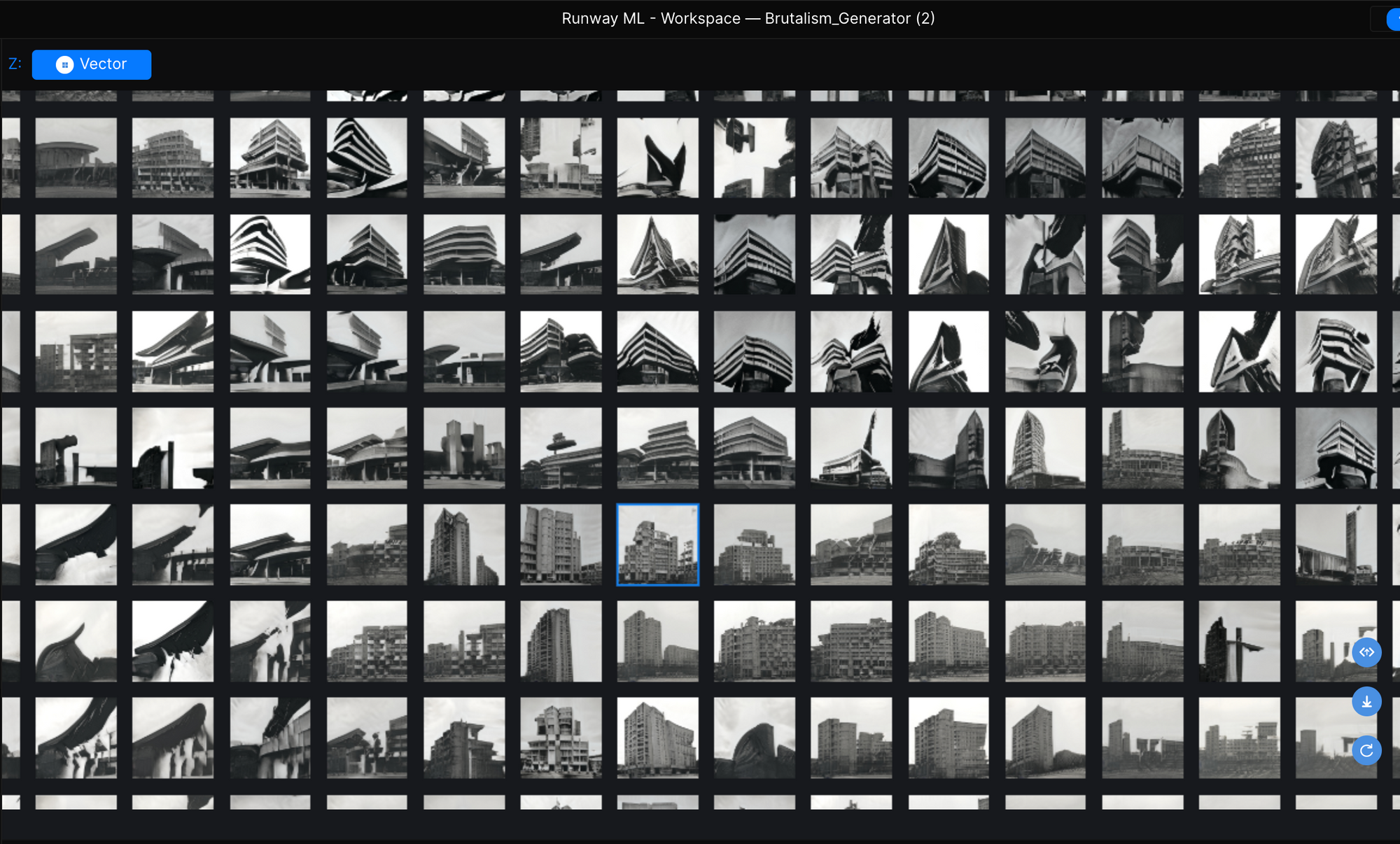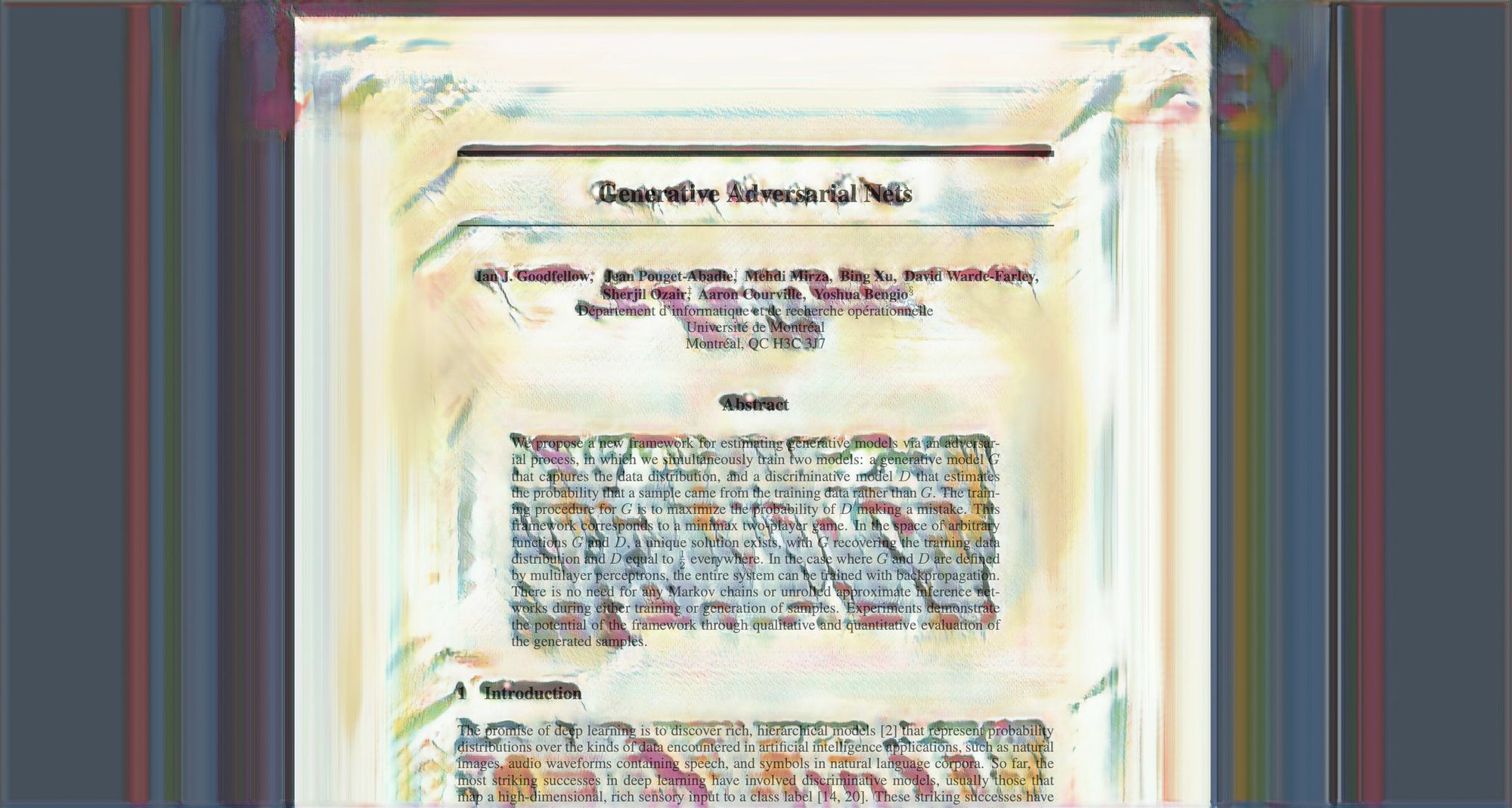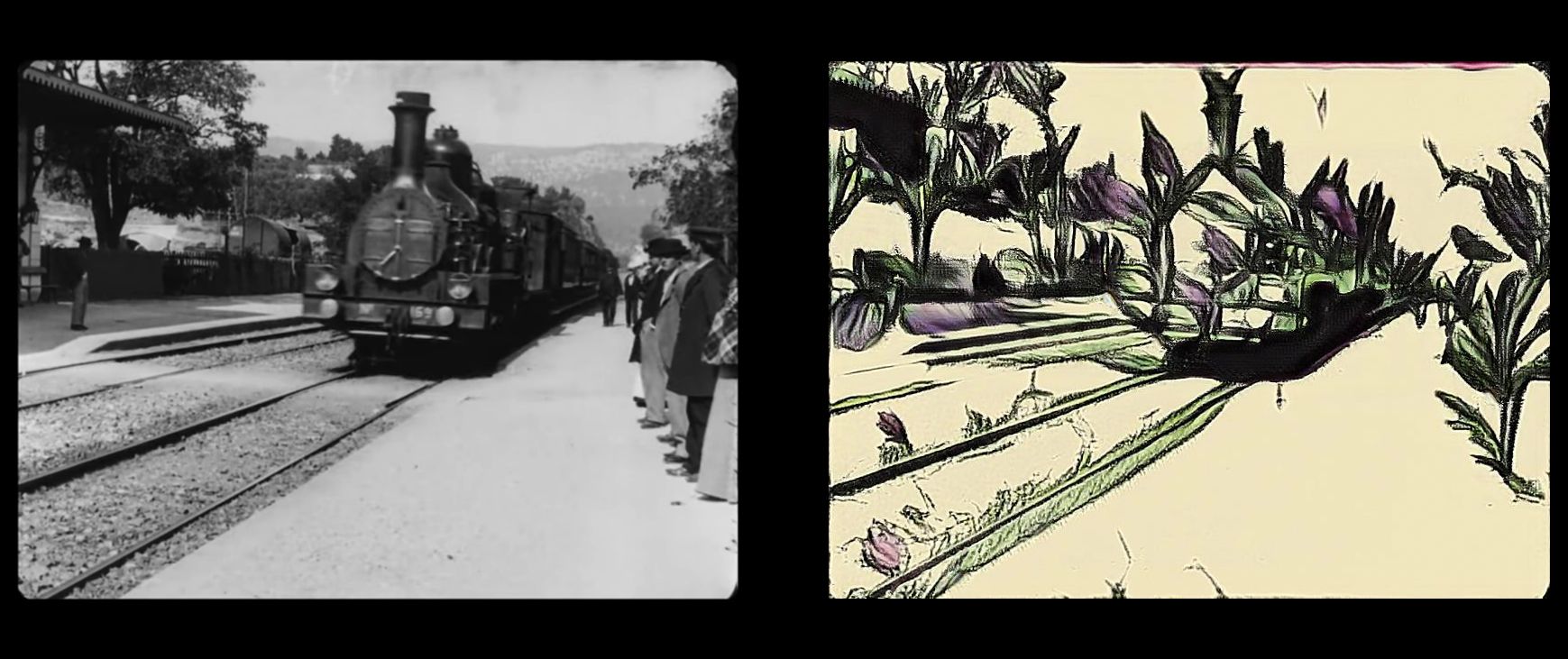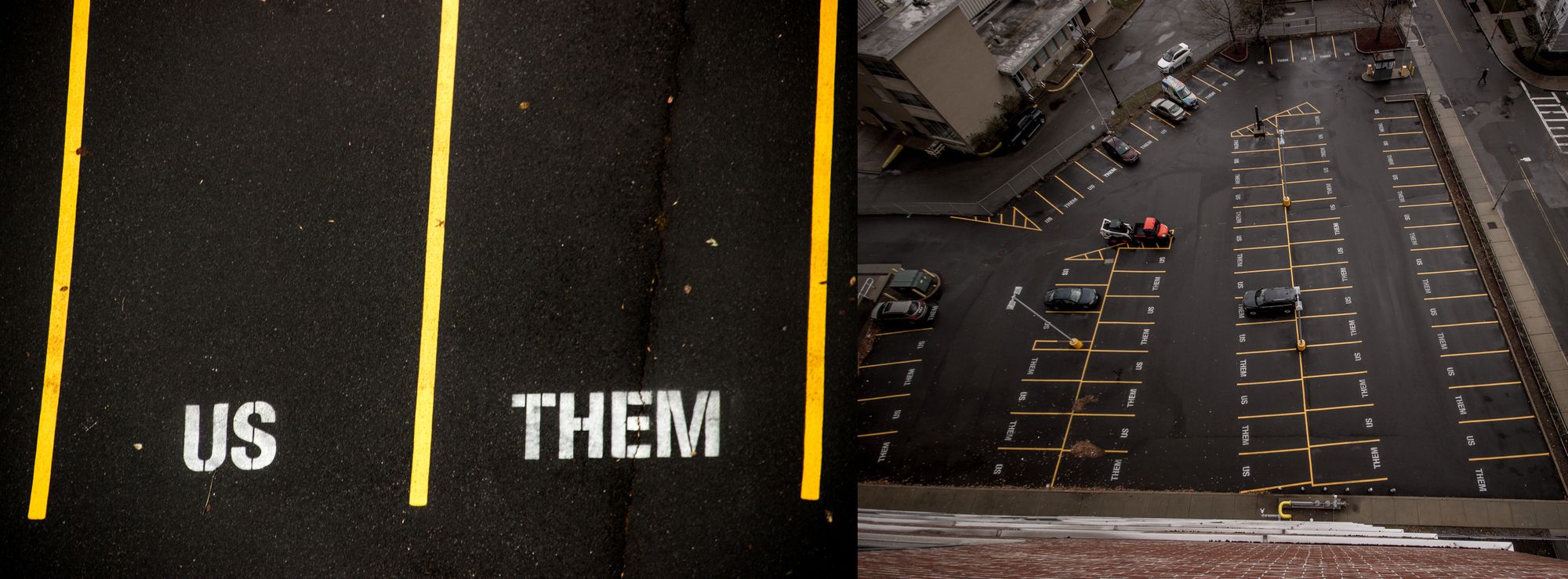Generative Adversarial Love
Our irreducible shared lives are an impossible dream of advanced machine learning systems. Can we steer the GAN revolution towards liberation by reasserting human potentiality?

By Jak Ritger - for K8 Howl - Dec. 25, 2020
Much has been said and written about Generative Adversarial Networks (GANs) over the past couple years. Much of this analysis focuses on the effects of the technology, in changing our relationships to images, text, information, or systems (such as algorithmic curation.) Less discussed are the conceptual and political implications of how GANs actually work. Indeed, In an introduction to Making Pictures with Generative Adversarial Networks by Casey Reas, Nora H Khan expounds on the need to de-mystify the GAN process and it's relation to power:
“Making Pictures describes AI in a language everyone can understand and engage through. In fact, without such careful, slow-paced delineation of the process, the AI space quickly becomes one where ideology and power converge in the crafting of seductive illusions. What’s often termed the dreamy, uncanny, or surreal quality of Gan imagery and machine learning’s outputs, generally, becomes itself representative of some obscure magic, rather than what we know of it: a process of identifying patterns, pulling out unexpected ones, and training, pushing, and pulling a model with careful curation of training inputs.”
The baseline for explaining GANs is “deep-dreams”, “hallucinated details” to “random word generator," a lottery hiding the card dealer or “GAN breeder” pointing towards cycles of evolution, a deep time process.

In many ways, this mystification of the processes of technology is the steady-state of capitalist production. The system must reproduce its own incomprehensibility in order to continually justify its necessity. If we could fully understand the machinery of the capitalist structure, then we would both be implicated in its inhumanity and responsible for allowing it to persist. We are required to mystify its complexities in order to absolve ourselves from the burden of suffering rendered by the illogic of capital. Marxist thinkers have argued that this mystification of capitalism in inevitable and that we should strive to understand the reasons for mystification rather than demystifying, as this is an impossibility under a capitalist system. While I agree with the first part, but I reject the idea that demystification is not paramount to reversing the encroachment of capital. The political disinterestedness that follows agency panic is crucial for generating consent under a neoliberal order, “There is nothing I can do to change it, so why bother?” The project of mystifying relations fuels this sense of agency panic, therefore a counter-project should be demystification and return political agency. Especially in today’s technological landscape, which is exponentially growing in complexity, understanding and demystifying is exceedingly important to any anti-capitalist (or for that matter, post-capitalist) project.

The initial scientific research that lead to the development Generative Adversarial Networks was formulated in a paper in 2014. It took a couple years for computer processing power to develop to a point that the research hypothesis could be implemented on wide scale. In the past two years GAN technology has taken off because of couple factors: cheap and powerful processors, interconnected data sets and a “space race” for AI demanding massive amounts of funding. The initial architecture of GANs is poignantly simple: two processors are given a set of “real” data (collection of image or text.) One processor is trained to generate fakes while the other is trained to spot forgeries. When forgeries are spotted by the Discriminator, the telltale details are transmitted back to the Generator. The process continues for thousands of steps, refining effective generating and discriminating until the two processors have created a model of how to construct a convincing forgery. This model can then output many permutations from on a string of numbers which is known as latent space. While the final outputs may appear as wild and magical apparitions, they are indeed the result of a binary machine process. If one enters two identical data sets into the same GAN program and uses two matching latent space numbers for both outputs, the results would be identical. The certainty gives lie to characterizations of the process as dreaming, canny or surreality which depend on a subjectivity of either the artist or viewer: Dalí's paintings are surreal visions, but paint tube and paint brush he used are not. Nevertheless, this is the de-facto lingo we use to describe a technological process so beyond familiarity.
This is perhaps less a quality of GAN imagery or texts themselves but rather the nature of new technological advancements becoming devirtualized through art. The first audience of projected moving pictures bolted from their chairs to escape a film of a speeding train.

In opposition to GANs’ reproducibility are the intractably divergent relationships of people. Two human minds interacting in real time produces an unquantifiable amount of possibilities that will never be able to be reduced down to algorithmic rule sets. As much as A.I. evangelists and Targeted Ad sales teams promote the idea that the only difference between computer and human intelligence is processing power, this will never be true. The human mind is dynamically evolving, a living architecture recursively molded by our experiences. The emerging understanding of neuroplasticity brings into a focus a physical link between the outside world and the shape of our brain. While Machine Learning may be vast in scale, the bonds that bring together minds vastly out grows the depth of any mechanical thinking.
The human potential movement of the 1980s, a project of self-actualization through meditations and group therapy gave way to Silicon Valley’s tools of surveillance capitalism. Where a previous generation saw the liberating potential of the crowd, the Tech Entrepreneur saw dollar signs. This excess human value was spun out into behavioral surplus and the human data market was born. Now, we are faced with another paradigm shift: the birth of Machine Learning. GANs offer an incredible potential for expounding on our directives, whether we give good or bad instructions is another matter. Unfortunately it is not a simple a matter of choice. GANs require massive amounts of processing power to operate on a wide scale. So, even if you design a system with egalitarian and liberating ideals eventually you will have to pivot to an extractive profit-driven business model in order to cover the cost of processing server time rental. This problem is known as “Solutionism.” I believe that solution to Solutionism is to reclaim the human potential movement from its shallow depths of Silicon Valley hustleprenuerism. Through a framing of GAN technology as an extension of human potential, we can attempt to detour or fork the coming GAN revolution towards a human future. We must do this by collapsing the binary of us and them, you and me, with and without. These binaries are digital reductions, an analog future knows no granularity, only dynamic and radical fluidity. I know this is possible because I live this potential human future.

My partner and I have been collaborating and collectivizing around the moniker “TRLLM” for eight and half years. By subverting the tradition of the “lone genius” and presenting our work as a product of a third imagined entity, we are freed from the bounds of how personal narratives influence the way artwork is perceived. By obfuscating the mechanics of production we are able to mystify the artistic process. This move is not unlike the capitalist imperative of mystifying political economy, except that we want to cut against alienation. Inside our closed system, our collaborative life, we build and rebuild a plateau of ideas. A virtual world, protected from the ravages of a “professional life,” where we can simulate new ways of seeing. This is love. To be each other’s muse. To be each other’s teacher. As we grow, we grow apart and back together again. The constant change of life requires maintenance to produce continuity, to generate time and space to be. This maintenance is adversarial requiring patience for equity, energy for empathy. K8 feels like me. I lose myself in our time, lose myself in us. I de-sublimate my ego into collectivity. We are de-commodified. This externalized inner-life is forever hidden from the surveillance apparatus, for even the most invasive bio-power can never really know what we share, for they can never really know us how we know us, never really see us how we see us.

Extracted meta-data, geolocations, IP pings, bits of text. Drips and clippings can form a shadow of a life but can never describe the light in the room. The way you held me in the basement back then. Riding in a black limousine with stiff leather, fingers so tight and cold. Or how we sat legs crossed plotting the new. Or how it feels to slip into the day, the news, the gaze, the smell. No. We are hidden now. We are virtual now. What goes out is the devirtual; a result of our system. We can steer the future by contorting it to our vision. The solution to Solutionism is to become undiscoverable. Airplane mode. Generative Adversarial Love.
